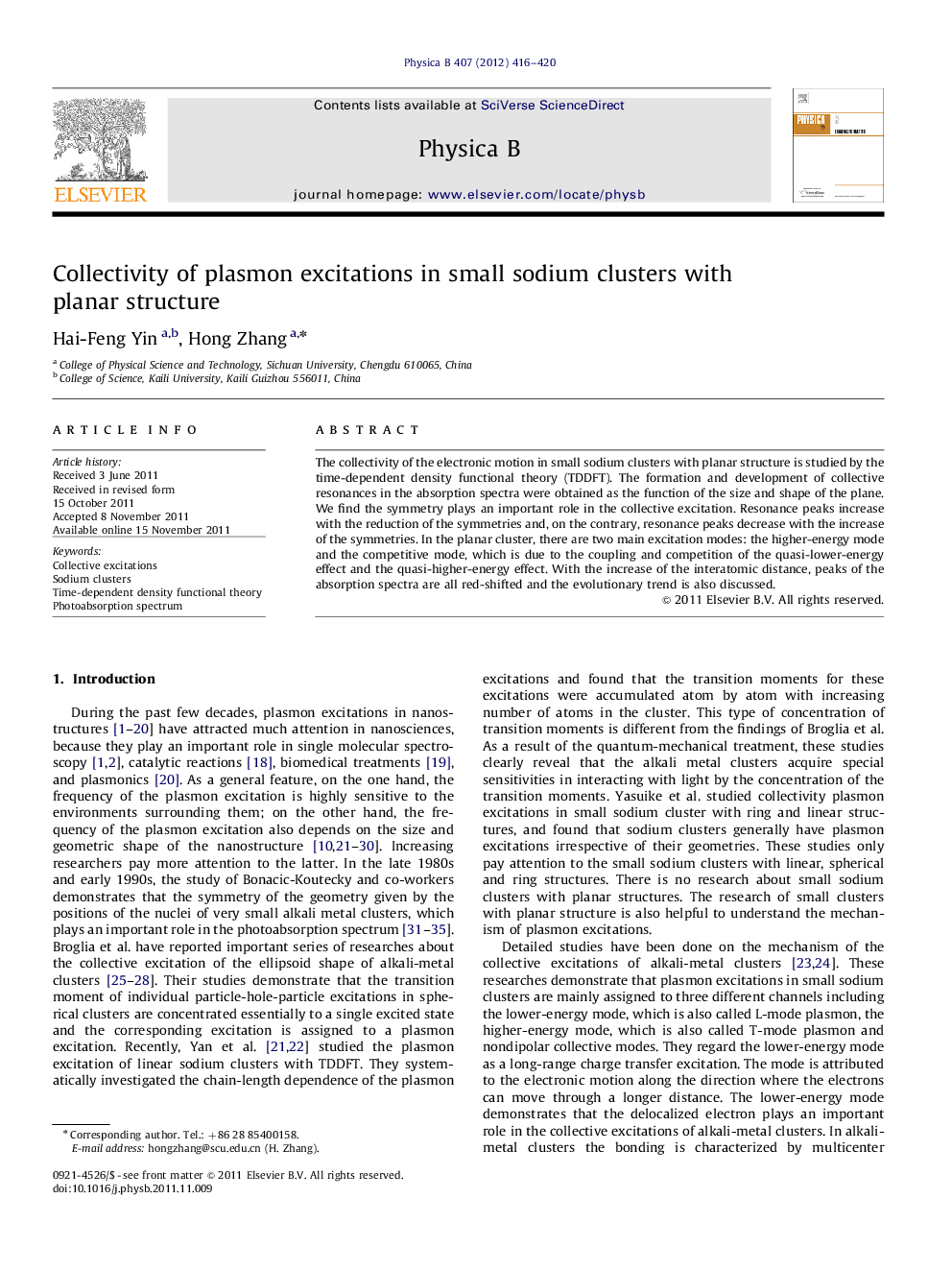| Article ID | Journal | Published Year | Pages | File Type |
|---|---|---|---|---|
| 1810839 | Physica B: Condensed Matter | 2012 | 5 Pages |
Abstract
The collectivity of the electronic motion in small sodium clusters with planar structure is studied by the time-dependent density functional theory (TDDFT). The formation and development of collective resonances in the absorption spectra were obtained as the function of the size and shape of the plane. We find the symmetry plays an important role in the collective excitation. Resonance peaks increase with the reduction of the symmetries and, on the contrary, resonance peaks decrease with the increase of the symmetries. In the planar cluster, there are two main excitation modes: the higher-energy mode and the competitive mode, which is due to the coupling and competition of the quasi-lower-energy effect and the quasi-higher-energy effect. With the increase of the interatomic distance, peaks of the absorption spectra are all red-shifted and the evolutionary trend is also discussed.
Related Topics
Physical Sciences and Engineering
Physics and Astronomy
Condensed Matter Physics
Authors
Hai-Feng Yin, Hong Zhang,
